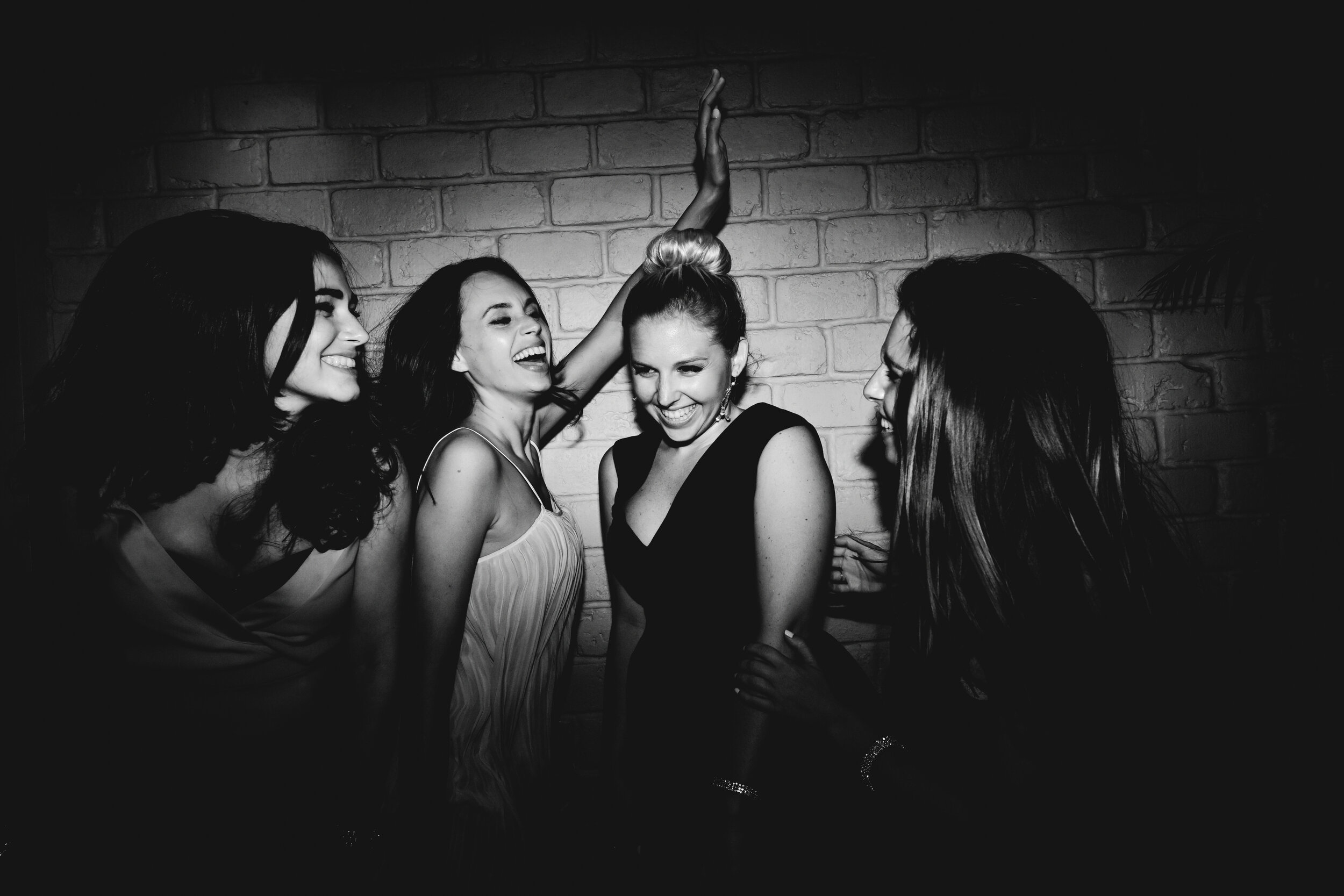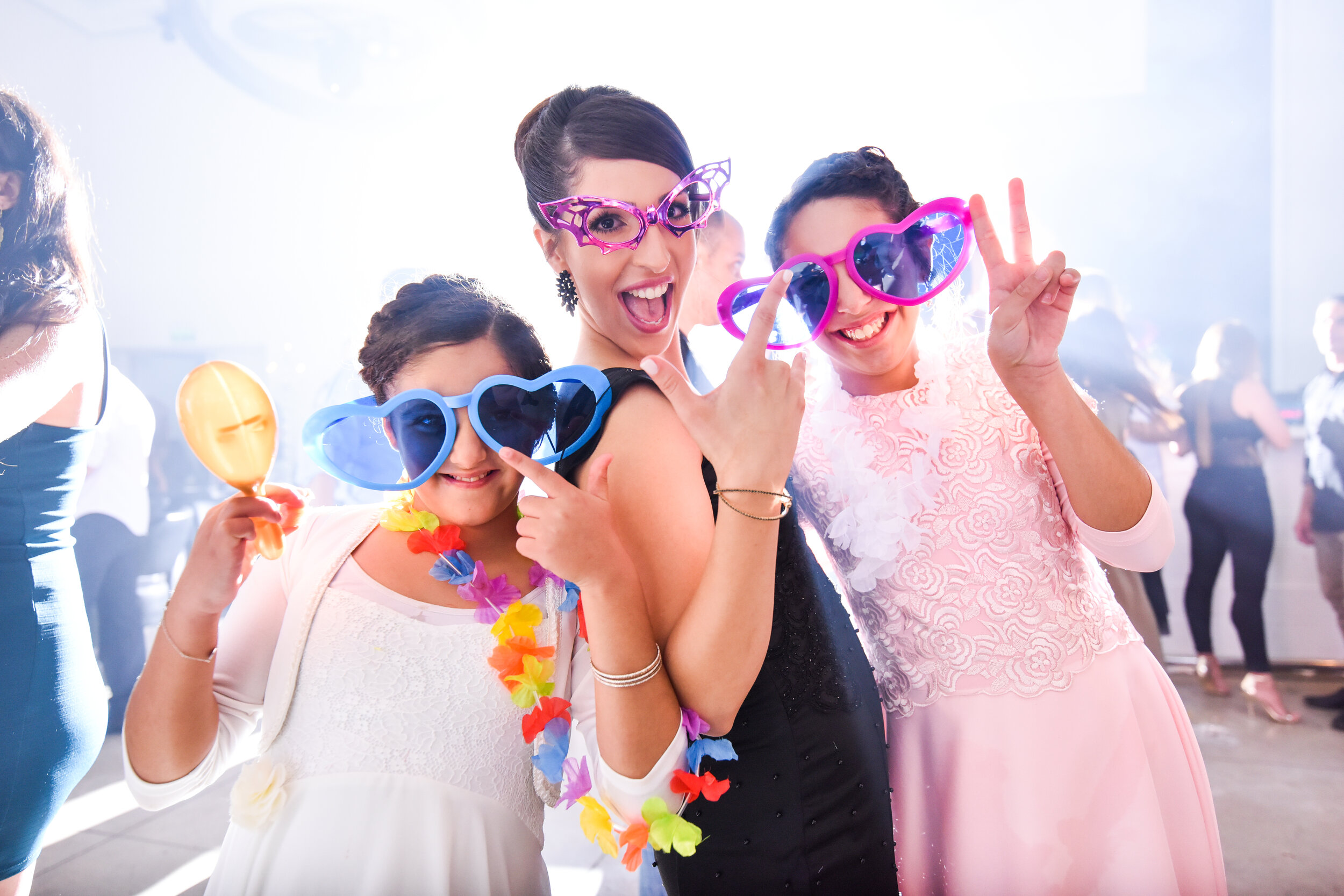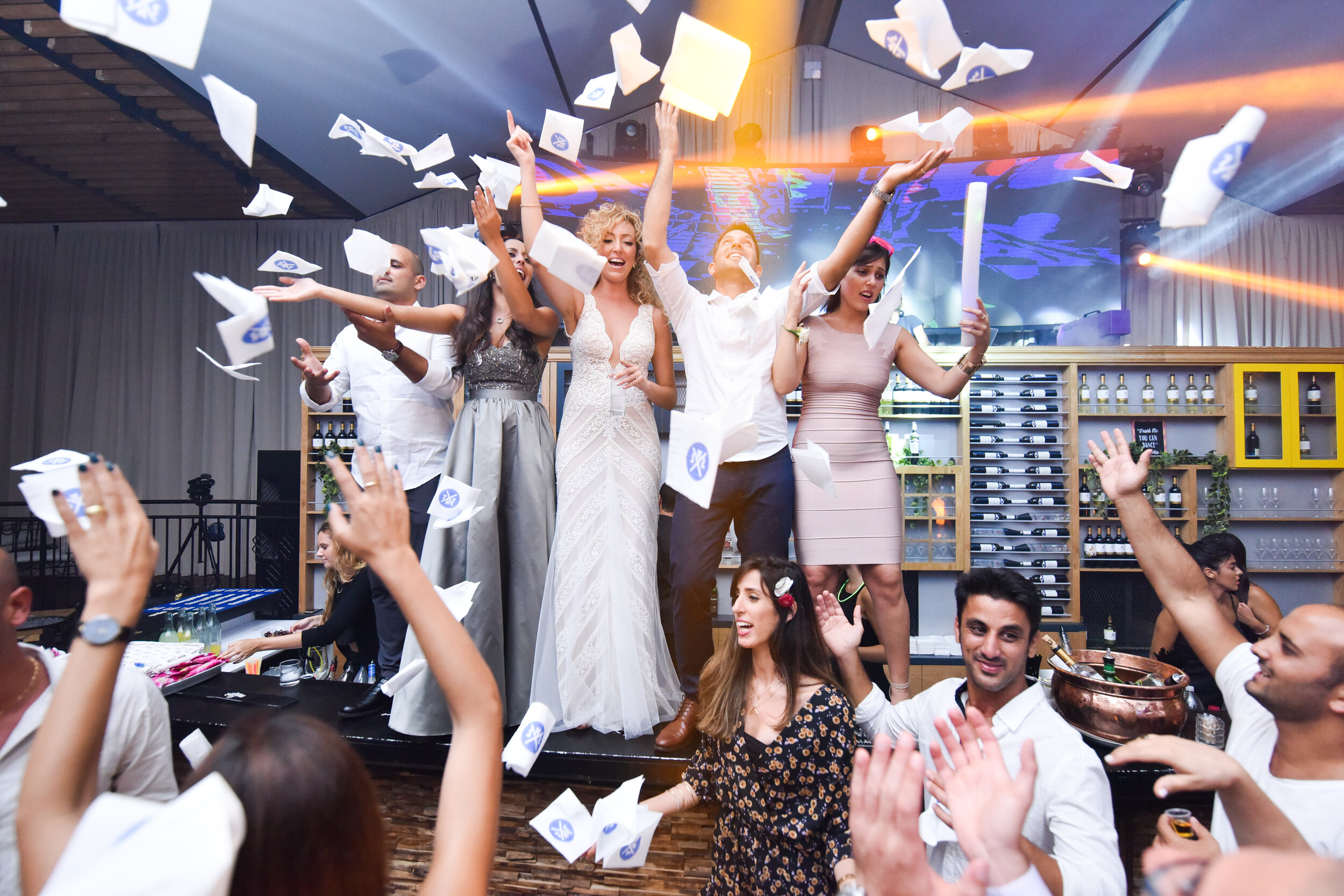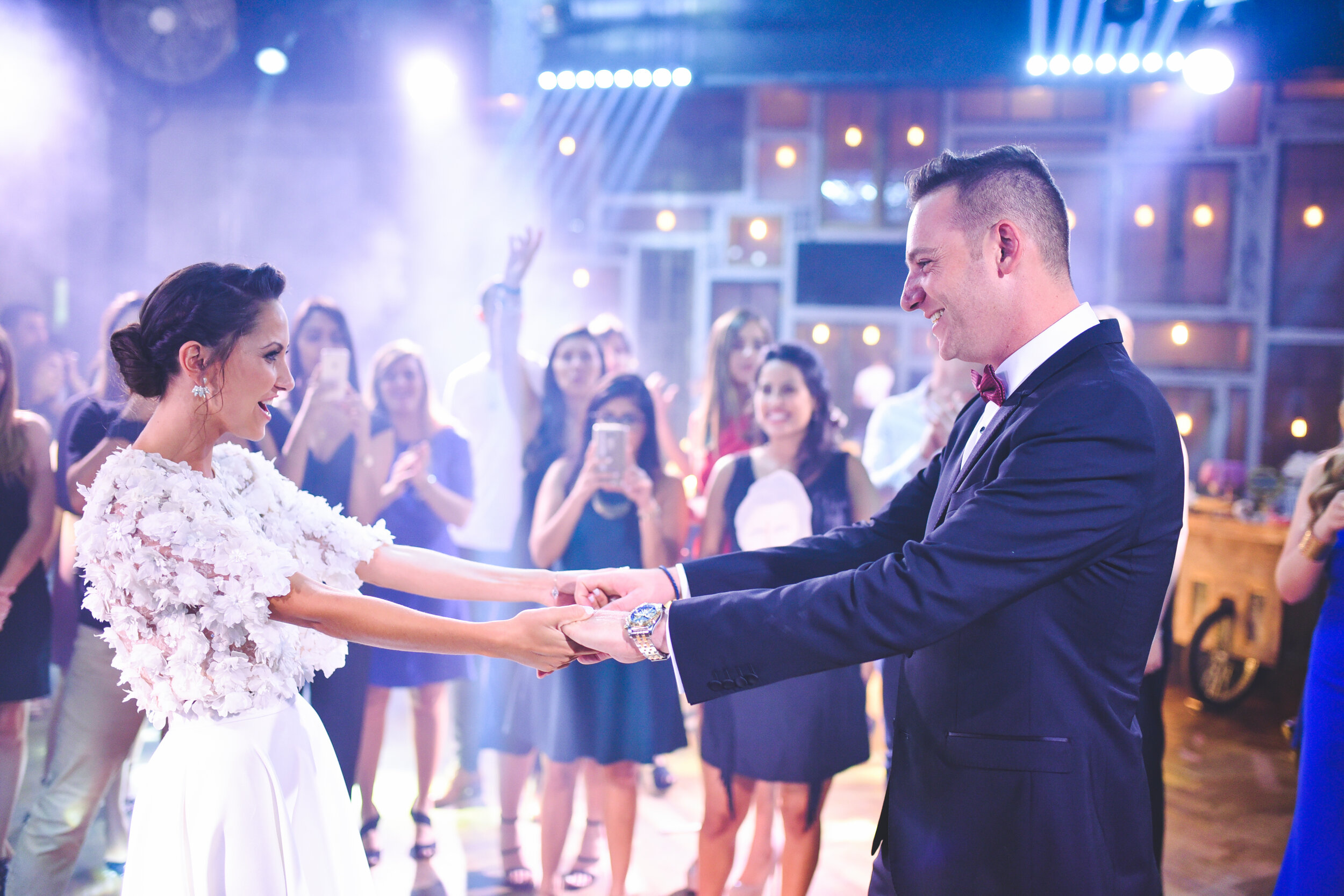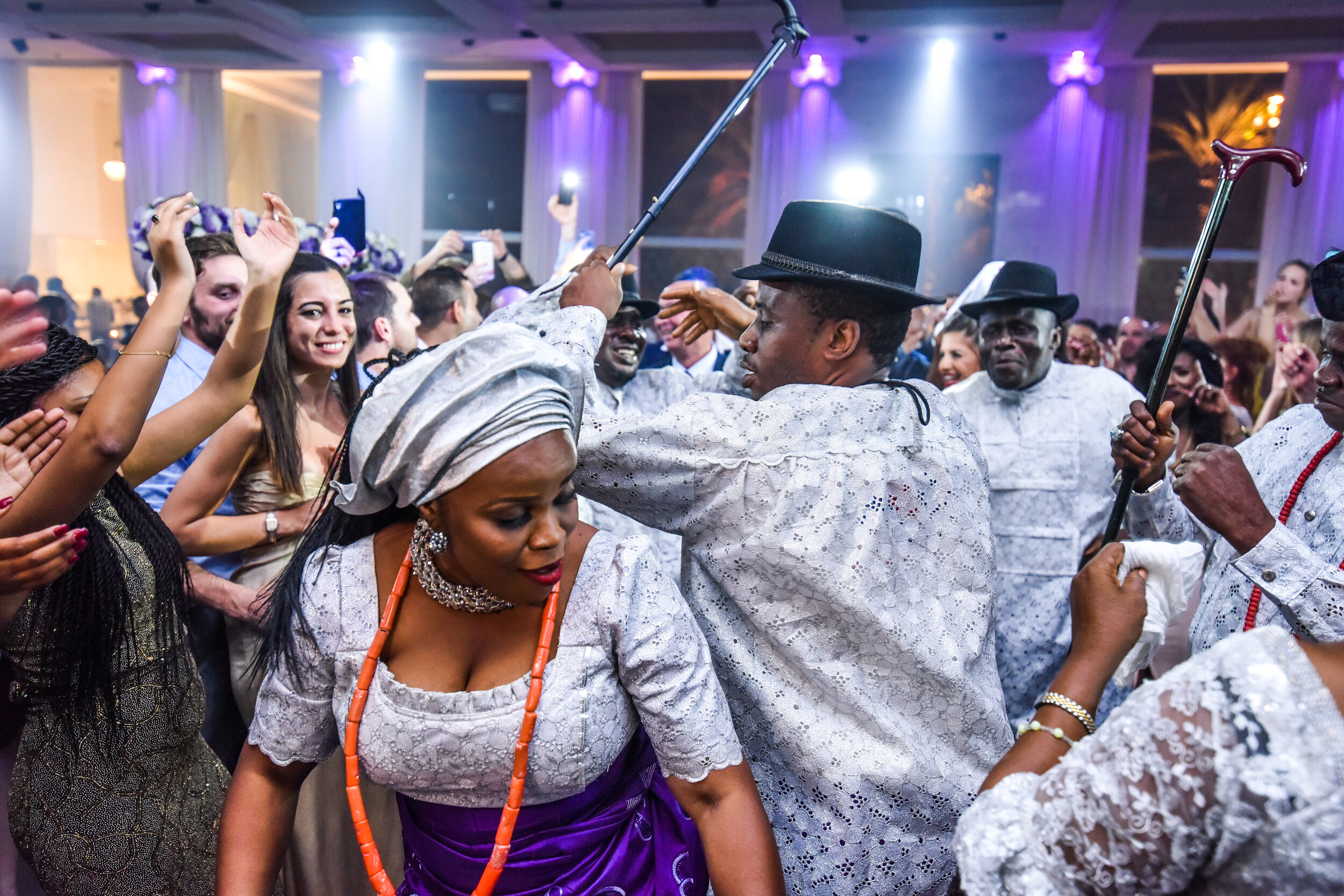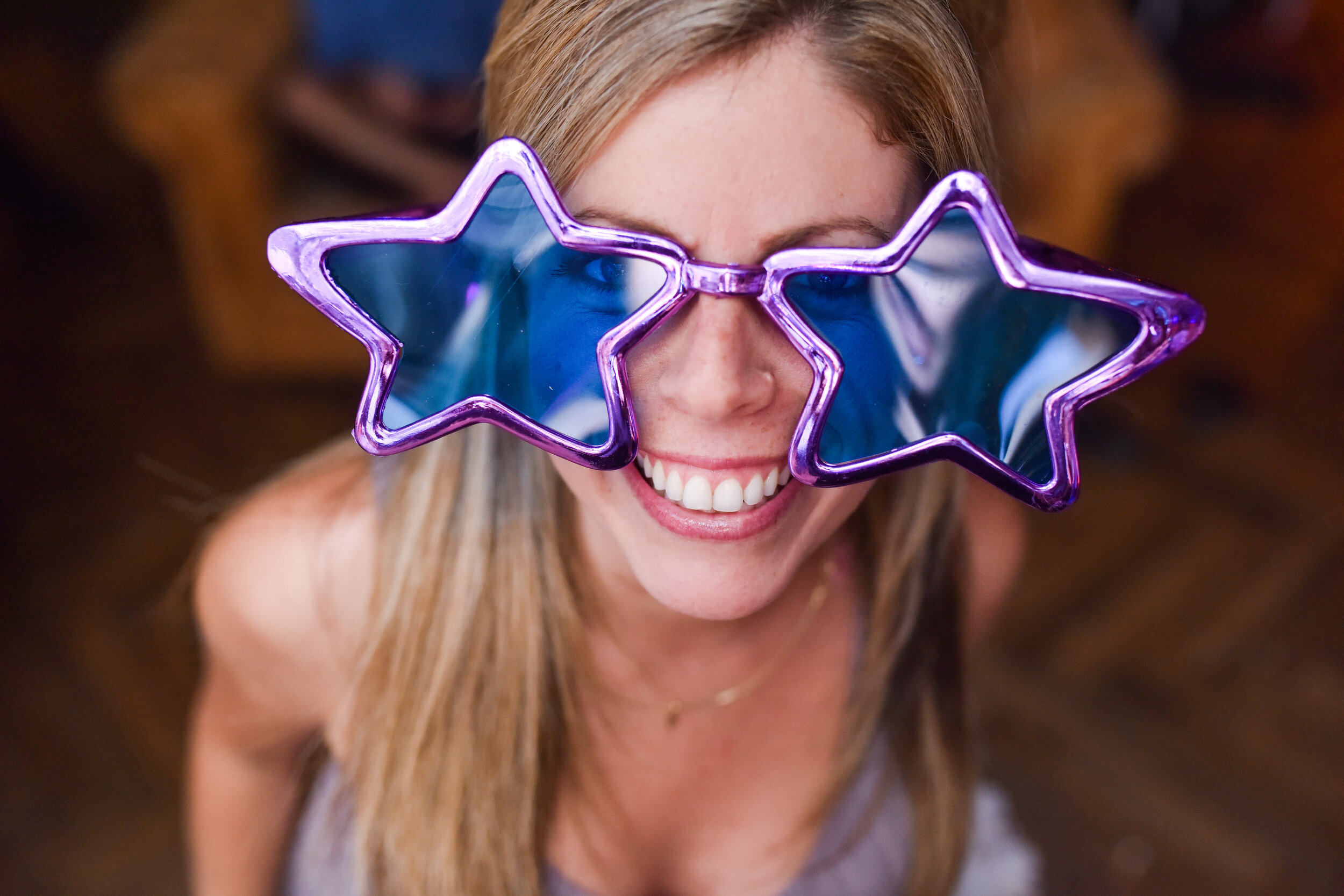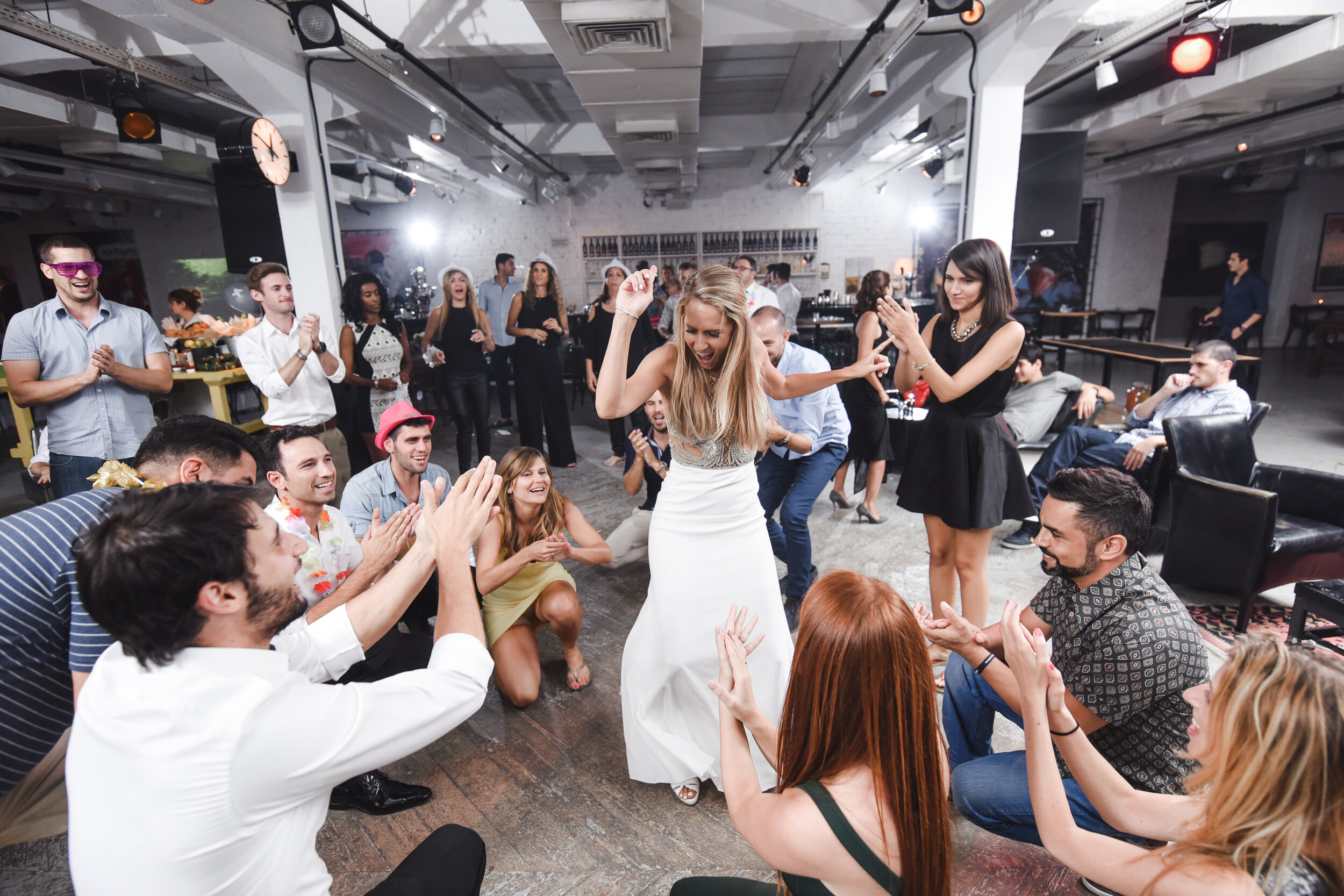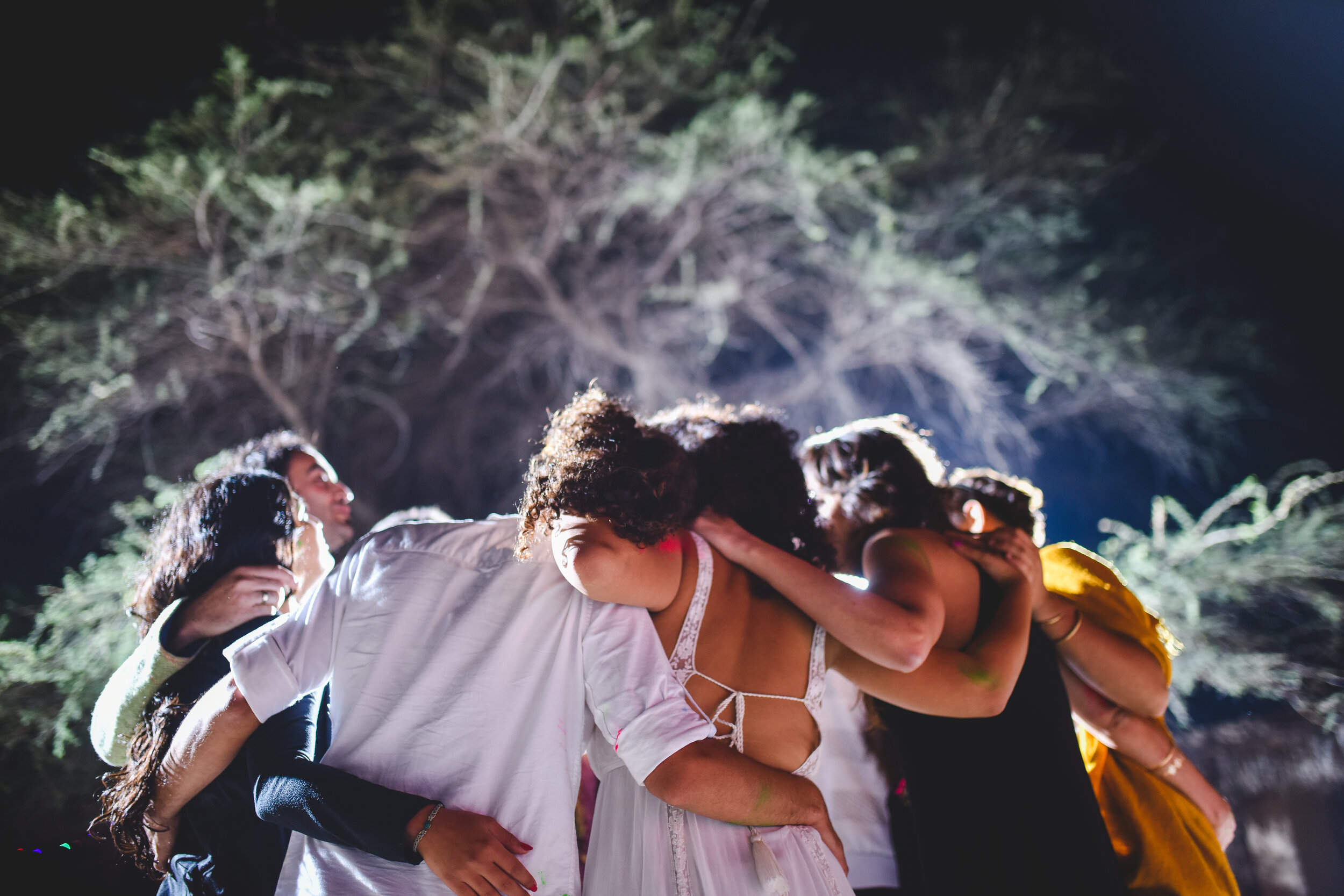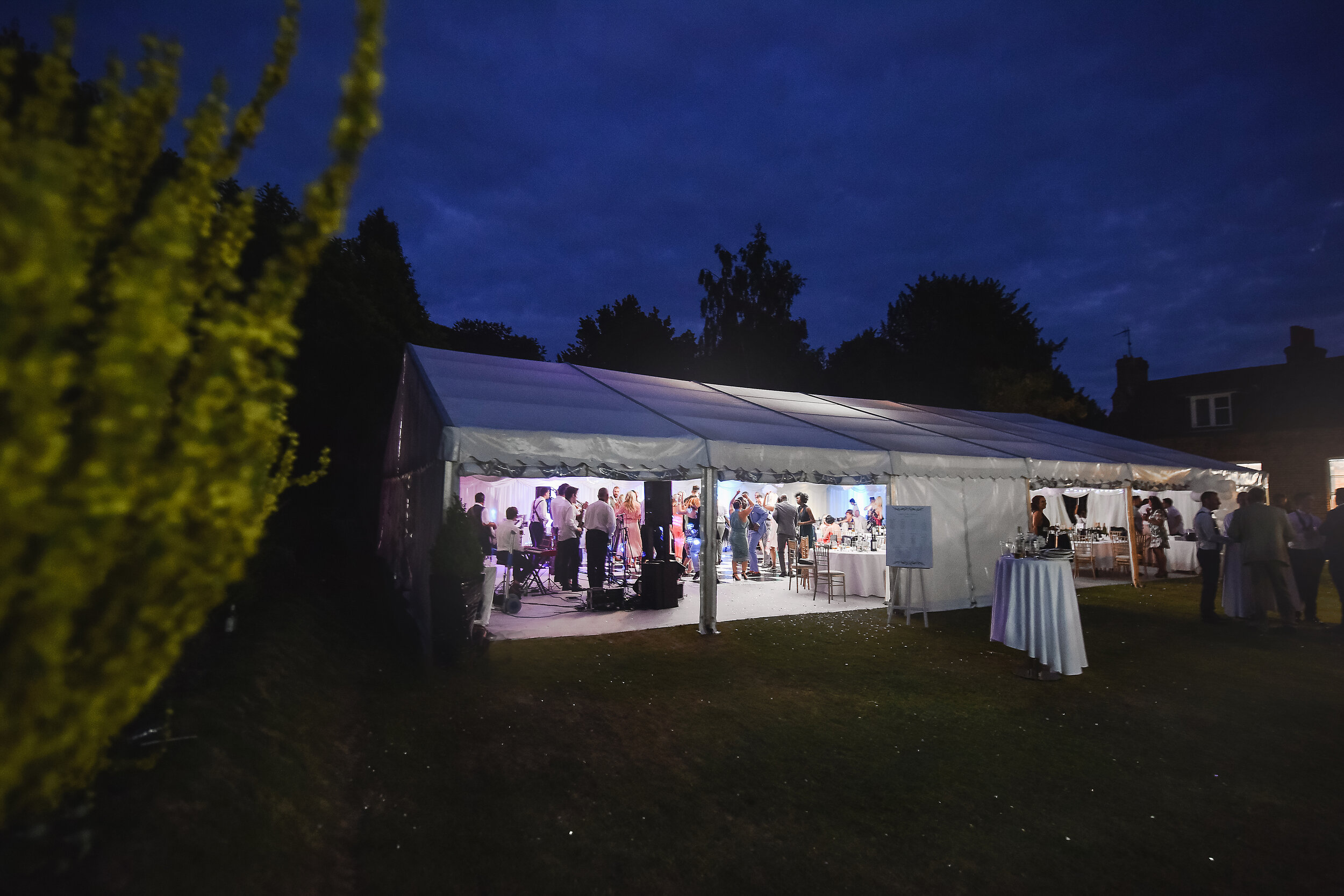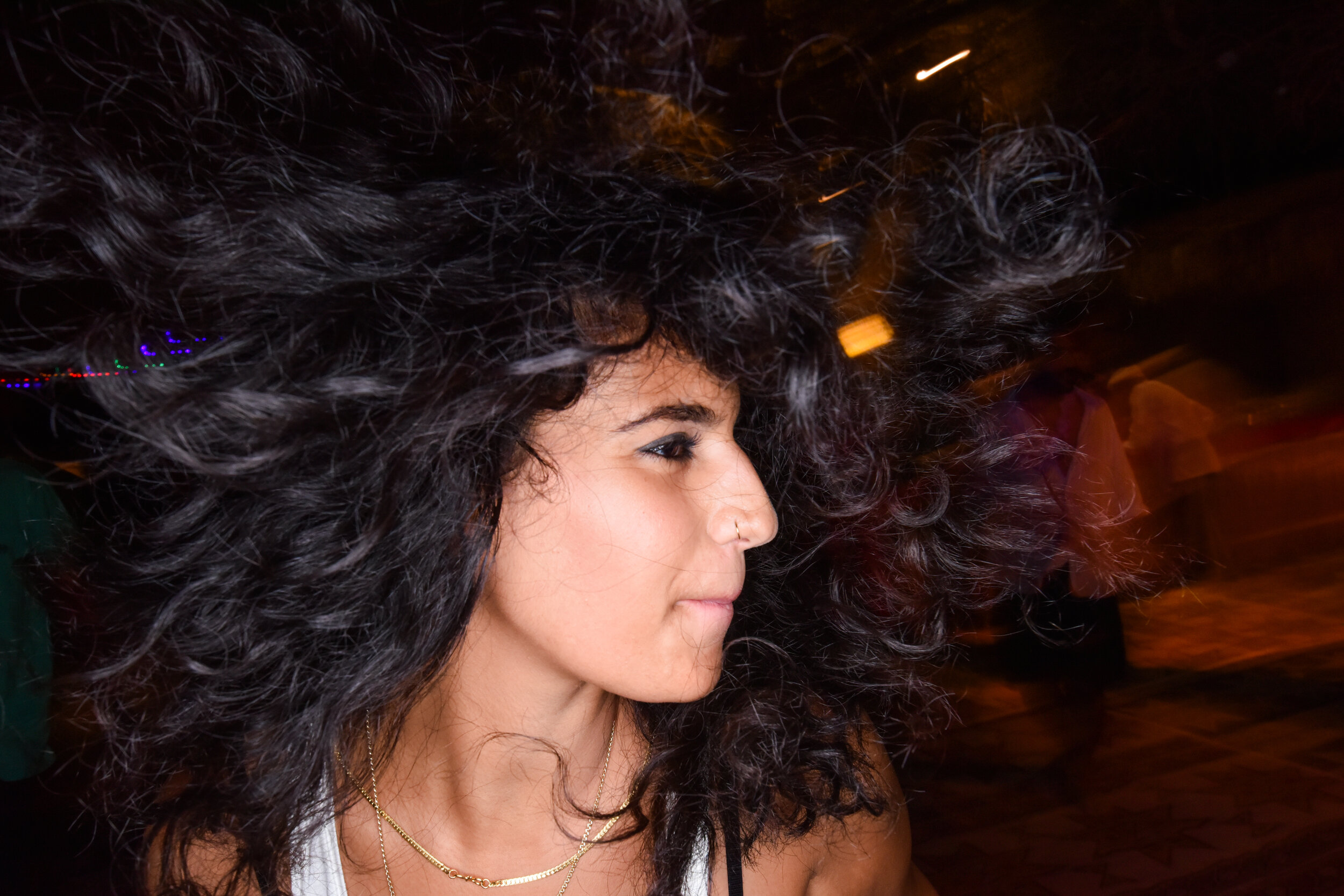Dancefloor
People often overlook the importance of photos on the dancefloor, in my option the images are just as important as the rest of the wedding day…..They can be very creative, tell a story and technically, very difficult.
I have taken over half a million photos just on dancefloors at weddings, and developed many techniques, but I always start with looking what I have got to work with. For example, the lighting the venue and the DJ are providing, the colour and height of the ceiling and walls. This will then determine what lighting I am going to use, this can range from studio lights to bouncing the light from the ceiling. I very rarley use on camera flash pointed directly at my subject but there are always exceptions…..
20mm f11 1/200sec. Flash on camera 1/128th power
Backlighting
This technique works really well when there is a fog machine present, this is what causes the light ray to show up. To work best in practice you need a assistant to move with you so they are always behind the subject and facing the camera.
Bouncing
This method is very versitile, the only caviat is that you need the correct type of room with no or little colour casts. The basic technique is to use the on camera flash to bounce the light from the ceiling onto your subject. This gives an nice even, natural soft light on the face. This technique can also be applied from walls and using off camera strobe lighting for simular effect. This technique can be used for dancefloors which are outdoors for obvious reasons, in this case I use “stadium lighting”
Stadium Lighting
This type of lighting which I use very oftern refures to the type of lighting used in football stadiums at night, where the light is in all corners of the room.
Ringflash
If the Dancefloor is going crazy then this is the must fun tool to bring out. It means getting up close and personal with a wideangle lend and a huge Ringlight on the lens.
